Potrebujeme váš súhlas na využitie jednotlivých dát, aby sa vám okrem iného mohli ukazovať informácie týkajúce sa vašich záujmov. Súhlas udelíte kliknutím na tlačidlo „OK“.
ASTM D4962-02(2009)
Standard Practice for NaI(Tl) Gamma-Ray Spectrometry of Water
Automaticky preložený názov:
Štandardné praktiky pre NaI (Tl) Gamma-Ray spektrometria vody
NORMA vydaná dňa 1.2.2009
Informácie o norme:
Označenie normy: ASTM D4962-02(2009)
Poznámka: NEPLATNÁ
Dátum vydania normy: 1.2.2009
Kód tovaru: NS-29303
Počet strán: 8
Približná hmotnosť: 24 g (0.05 libier)
Krajina: Americká technická norma
Kategória: Technické normy ASTM
Kategórie - podobné normy:
Anotácia textu normy ASTM D4962-02(2009) :
Keywords:
gamma pulse height analysis, gamma ray spectrometry, multichannel analyzer, sodium iodide detector, Calibration--water analysis instrumentation, Gamma radiation--water, Gamma-ray spectrometry, Multichannel analyzer, Radioactive water analysis, Radionuclides, Sodium iodide (NaI), Threshold detectors--50 keV (greater), ICS Number Code 13.060.30 (Sewage water)
Doplňujúce informácie
| Significance and Use | ||||||
|
Gamma-ray spectrometry is used to identify radionuclides and to make quantitative measurements. Use of a computer and a library of standard spectra will be required for quantitative analysis of complex mixtures of nuclides. Variation of the physical geometry of the sample and its relationship with the detector will produce both qualitative and quantitative variations in the gamma-ray spectrum. To adequately account for these geometry effects, calibrations are designed to duplicate all conditions including source-to-detector distance, sample shape and size, and sample matrix encountered when samples are measured. This means that a complete set of library standards may be required for each geometry and sample to detector distance combination that will be used. Since some spectrometry systems are calibrated at many discrete distances from the detector, a wide range of activity levels can be measured on the same detector. For high-level samples, extremely low efficiency geometries may be used. Quantitative measurements can be made accurately and precisely when high activity level samples are placed at distances of 1 m or more from the detector. Electronic problems, such as erroneous deadtime correction, loss of resolution, and random summing, may be avoided by keeping the gross count rate below 2 000 counts per second and also keeping the deadtime of the analyzer below 5 %. Total counting time is governed by the activity of the sample, the detector source distance, and the acceptable Poisson counting uncertainty. |
||||||
| 1. Scope | ||||||
|
1.1 This practice covers the measurement of radionuclides in water by means of gamma-ray spectrometry. It is applicable to nuclides emitting gamma-rays with energies greater than 50 keV. For typical counting systems and sample types, activity levels of about 40 Bq (1080 pCi) are easily measured and sensitivities of about 0.4 Bq (11 pCi) are found for many nuclides (1-10). Count rates in excess of 2000 counts per second should be avoided because of electronic limitations. High count rate samples can be accommodated by dilution or by increasing the sample to detector distance. 1.2 This practice can be used for either quantitative or relative determinations. In tracer work, the results may be expressed by comparison with an initial concentration of a given nuclide which is taken as 100 %. For radioassay, the results may be expressed in terms of known nuclidic standards for the radionuclides known to be present. In addition to the quantitative measurement of gamma-ray activity, gamma-ray spectrometry can be used for the identification of specific gamma-ray emitters in a mixture of radionuclides. General information on radioactivity and the measurement of radiation has been published (11 and 12). Information on specific application of gamma-ray spectrometry is also available in the literature (13-16). 1.3 The values stated in SI units are to be regarded as standard. No other units of measurement are included in this standard. 1.4 This standard does not purport to address all of the safety concerns, if any, associated with its use. It is the responsibility of the user of this standard to establish appropriate safety and health practices and determine the applicability of regulatory limitations prior to use. |
||||||
| 2. Referenced Documents | ||||||
|
Podobné normy:
Historická
1.4.2013
Historická
15.1.2008
Historická
1.5.2008
Historická
15.6.2011
Historická
1.1.2013
Historická
1.1.2013
Odporúčame:
EviZak - všetky zákony vrátane ich evidencie na jednom mieste
Poskytovanie aktuálnych informácií o legislatívnych predpisoch vyhlásených v Zbierke zákonov od roku 1945.
Aktualizácia 2x v mesiaci !
Chcete vedieť viac informácii ? Pozrite sa na túto stránku.


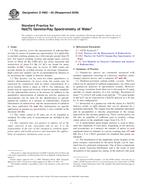
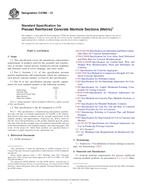 ASTM C478M-13
ASTM C478M-13 ASTM C913-08
ASTM C913-08 ASTM C966-98(2008)..
ASTM C966-98(2008)..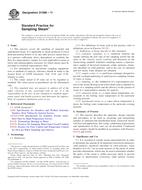 ASTM D1066-11
ASTM D1066-11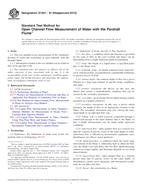 ASTM D1941-91(2013)..
ASTM D1941-91(2013)..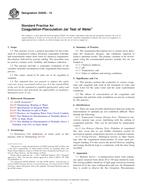 ASTM D2035-13
ASTM D2035-13
 Cookies
Cookies
